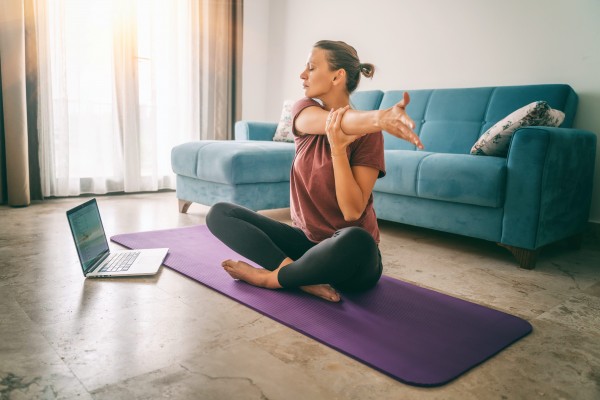Stretching: Magda's Definitive Guide!
Posted Oct 26, 2021 at 13:04
Posted Oct 26, 2021 at 13:04

This last week I have spent many hours preparing for an exam in human function. As a part of my revision, I have read a few papers on stretching. Since it is one of the most commonly asked questions by people coming to see us at the clinic - Ďstretch or not to stretch?í and Ďhow?í I have prepared a little summary this week about what the recent research is saying about it.
There are three main types of stretching: static, dynamic and pre-contraction stretching. Static stretching is when you hold the position for a period of time. This can be performed actively when you do it yourself or with a partner or therapist when the other person passively helps with the stretch.
Dynamic stretching is when you actively use momentum and muscular effort to stretch and you donít hold the position. You just repeat the movement. Again here, we can perform the active stretch, letís say such leg swing- as far as you can of course for the stretching effect. You can also use another form of dynamic stretching, called ballistic stretching. This is when you take your joint to the end range of motion and basically bounce. That technique used had is moment some years ago but due to risk of injury is not recommended nowadays.
Another group of stretching techniques uses contraction of the muscle followed by a stretch that can be done actively or passively- thatís when someone creates the movement at the joint for you.
These are techniques such as muscle energy techniques which are commonly used in soft tissue therapies. This is when the therapist would take your joint to what we call the first point of bind- to the point where there is the first restriction in the movement and ask you to resist taking it any further. After a short period of time, your muscle will be able to relax and lengthen a bit more. Often this is combined with holding the breath in and breathing out at the right times.
How to choose the right one for you?
There are mixed studies but the most recent and prevalent opinion is as follows.
Generally, dynamic stretching is considered a great way of warm-up before running or any other cardio and high-intensity activities as it improves performance.
Static stretching has been shown to affect muscle strength if performed as a warm-up in runners in cyclists but it can have a positive impact on performance when a great range of motion is required such as gymnastics.
Another thing to consider is how long to perform the stretch for and how many repetitions. When it comes to static stretching, recent studies have shown that 15 to 30 seconds static stretch is the most effective. Also, when the total static stretch duration was constant there was no difference between six times 10-second stretches and two 30 seconds stretches. The total amount of time seems to be important as long as it is split into equal intervals.
The good news for those of us who donít like stretching is also a recent study that suggests that there is no more effect after two to four reps in one session. Happy days, right? It means you can do a 2minutes stretch for a particular muscle or muscle group and get results as long as you do it on regular basis. But when we think about it. Incorporating few minutes exercise into daily life is easier than committing to 1 hour gym session a day, so really, no excuses here is your pecs or quads are tight.
Recent studies also suggest which stretches are better according to sex and age. Studies have shown that men and older adults under 65 years of age responded better to contract-relax stretching which is for example PNF- proprioceptive neuromuscular facilitation. Women and older adults over 65 tend to benefit more from static stretching. Studies also suggest that people over the age of 65 gain greater flexibility from longer static stretches and holding position for 60 seconds has shown the best results.
There it is then- a little summary of what studies say about stretching. It does help your flexibility and keeps your muscles and joints healthy. The main thing to remember is that being active is an essential part of a healthy lifestyle. The older we get, or the more sedentary job we have, the more we actually have to make sure that we move and stretch.